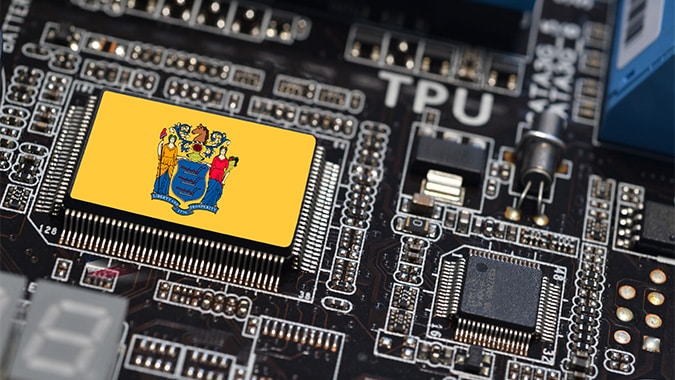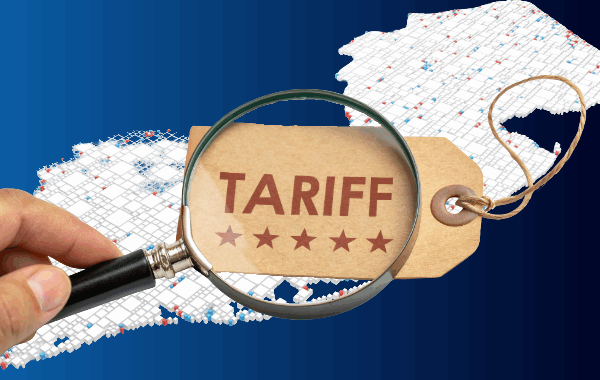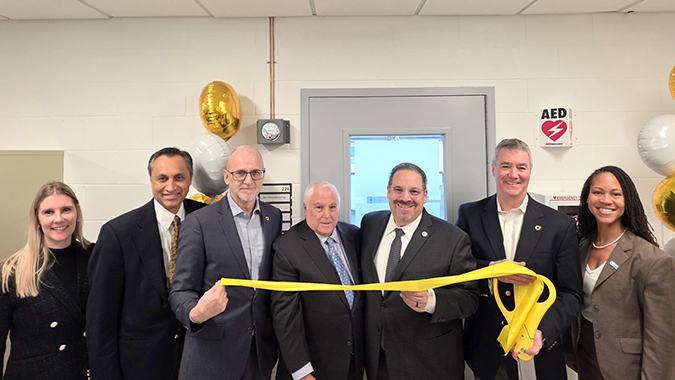Emil Kaunitz, who founded Toms River-based Specialty Systems Inc. in 1978, has learned a thing or two about New Jersey accessing federal dollars when opportunity strikes.
“Nothing comes to New Jersey unless you go get it,” he told lawmakers at a Legislative Manufacturing Caucus meeting this week at the Statehouse.
As it relates to the CHIPS and Science Act, which authorizes nearly $280 billion for domestic research and manufacturing of semiconductors, the New Jersey Economic Development Authority says it has a plan to do just that.
DIPPING INTO CHIPS
The bipartisan CHIPS Act was signed into law by President Joe Biden in 2022, largely in response to the United States falling behind in semiconductor production, which saw major chip shortages on appliances, vehicles and computers during the COVID-19 pandemic.
It provides about $53 billion for domestic semiconductor research, development, and manufacturing, as well as authorizes major funding increases for science and technology research and development.
When the law was signed, NJBIA President and CEO Michele Siekerka said it “represented an amazing opportunity to continue and grow our historic path of innovation, which will result in more jobs and revenue for the state.”
The CHIPS Act encourages state or local government incentives to bolster applications for funding.
Incentives, however, do not necessarily mean huge tax incentives for individual companies.
The U.S. Commerce Department’s guidance encourages projects that include state and local incentive packages capable of “creating spillover benefits that improve regional economic resilience and support a robust semiconductor ecosystem, beyond assisting a single company.
“Such incentives might include investments in workforce, education, site preparation, or infrastructure (including transit or utilities) that are not limited to the applicant but designed to benefit both the applicant and the broader community.
“Likewise, the Department will place less weight on incentives (such as direct tax abatements) with less potential for spillover benefits.”
JERSEY STRONG
Given the criteria of the CHIPS funding, New Jersey finds itself in a bit of a geographical disadvantage in terms of having huge spans of open, buildable space available compared to other states.
“We’ve got to pick our spots,” NJEDA President Tim Sullivan told the Manufacturing Caucus.
John W. Kennedy, the former CEO of NJMEP and current Senior Adviser for NJEDA, and Andy Kuhn, Senior Project Officer at the agency, said the agency is currently following through on a targeted, nuanced approach to CHIPS funding based on New Jersey’s assets.
Specifically, defense.
“We have Picatinny Arsenal, we have the Joint Base (McGuire-Dix-Lakehurst), we’ve got the Earle Naval Weapons Station,” Kennedy explained. “We also have the FAA Tech Center (in Egg Harbor Township).
“We can strengthen their ability to be on the cutting edge and then run tandem programs in a dual way that support the military and security, but also support the industry as a whole.”
“There are different levels of chips and semiconductor manufacturing,” Kuhn added. “You have a large-scale chip factory that usually gets big announcements, the big ribbon cutting, which employ thousands of people.
“But in addition to that, you have this whole robust ecosystem where they take some of those same chips and you have to package them and specialize them in ways that make them unique, user-specific for technological advances.
“What we’re trying to identify here in New Jersey is if there’s a significant opportunity in the defense space that we can get collaboration among commercial firms and the defense sector to pioneer small runs of specialized chips that we can demand for highly secure chip construction,” Kuhn said.
Kuhn said New Jersey’s targeted approach is founded on the need for more security within chip production.
He said data shows more than 70% of chips that enter specific military operations have already been compromised by another foreign entity, or during the manufacturing process itself.
“We need to focus on a siloed approach that makes security a key part of this process,” he said.
“Through this plan, we would create this dual foundry concept that would have specialty foundries for small batch runs of specific types of semiconductors. You would have defense and commercial working in collaboration in highly secure environments, that would allow them to test specific chips that could be prototypes, that could be used to enhance not only the civilian needs and the defense needs, but also for the economy of New Jersey for the next 100-plus years.”
Kennedy said New Jersey would also benefit from its existing assets with the manufacturing industries and at state institutions like Rutgers, Princeton University, Rowan University, Kean University and New Jersey Institute of Technology.
He said all can be involved in the “lab-to-fab” process.
“Why not maximize what we have,” he said. “We have about 200 companies off the top that work in the chips arena, from big companies to small companies. Then we have another 500 that are part of the supply chain.
“Add to that, thousands of New Jersey manufacturers that take and use those chips for their businesses. If we can be that cutting-edge provider, we can work with some of our partners to do mass fab. I think this is a tremendous opportunity.”
NEXT STEPS
NJEDA stopped short of asking for a specific number of state investment dollars during the Legislative Manufacturing Caucus which is co-chaired by Senators Linda Greenstein (D-14) and Mike Testa (R-1) – although the idea of $250 million to $400 million was discussed as examples during the testimonies.
Current NJMEP President and CEO Peter Connolly said it was important for New Jersey to impress upon the U.S. Department of Commerce’s National Institute of Standards and Technology, which is administering the CHIPS funding, that New Jersey has a plan that is worth prioritizing.
Kennedy concurred.
“We need to use our caucus, our governor’s office, and our federal delegation to get NIST to come up and visit us,” Kennedy said. “Maybe they sit with us at the Picatinny Arsenal or the Joint Base and understand what we bring to the table.”
Sullivan added that a more targeted financial ask may be made as the state enters budget season, but some manufacturing investment has already been made that would be accounted for in a federal application. Most notably, the $55 million already designated to the state’s successful Manufacturing Voucher Program.
NJBIA Chief Government Affairs Officer Christopher Emigholz said the robust, two-hour discussion will help the state’s manufacturing sector – and the hearing showed why a Legislative Manufacturing Caucus is needed.
“Discussions such as this are crucial to the state’s overall economy and we thank NJEDA, NJMEP, all the manufacturers and especially the caucus for hearing the latest information and for their feedback. It’s all a great step in the right direction.”




